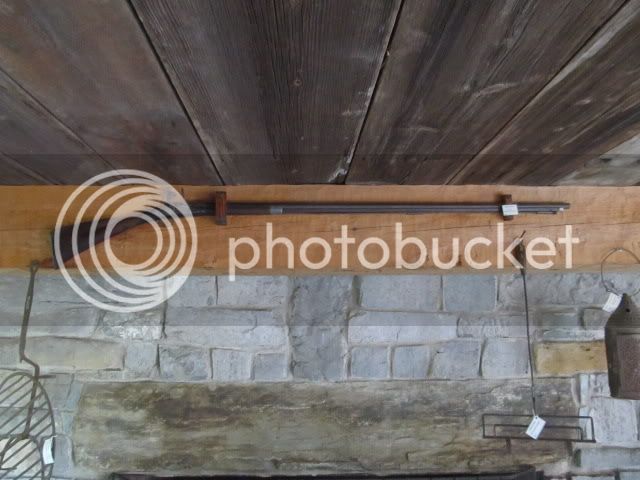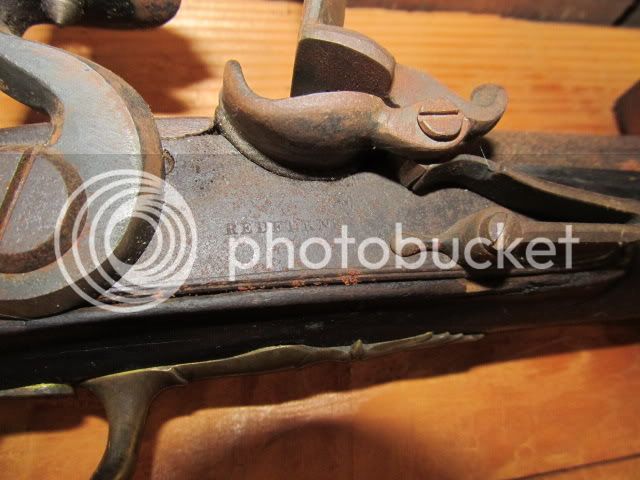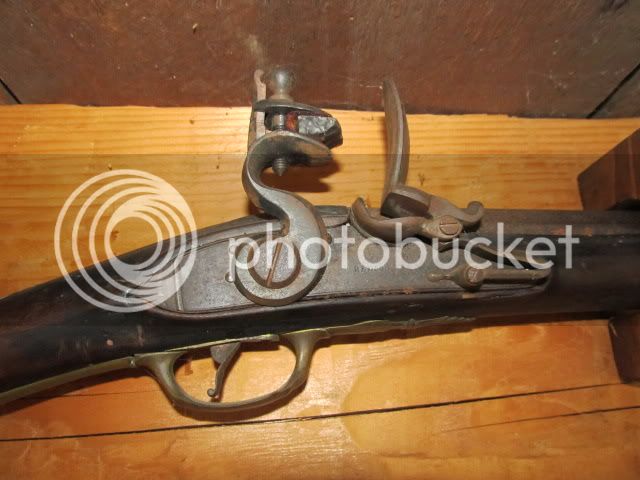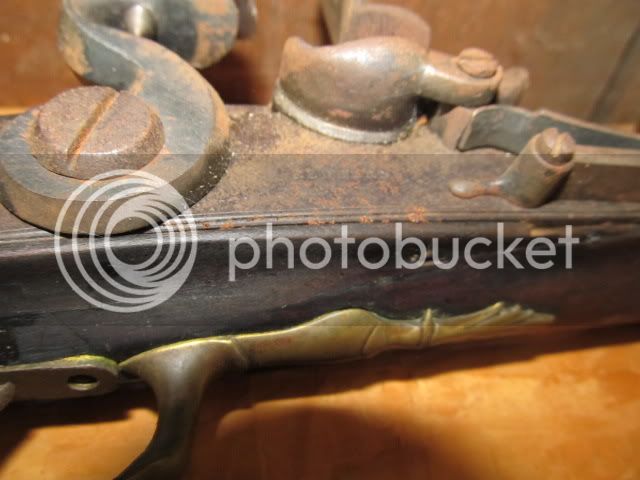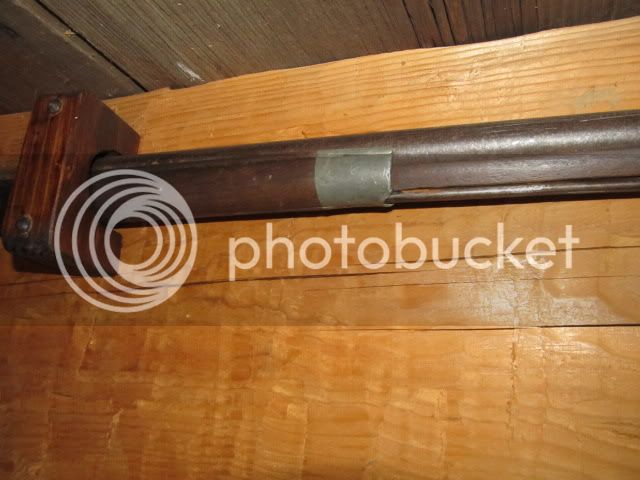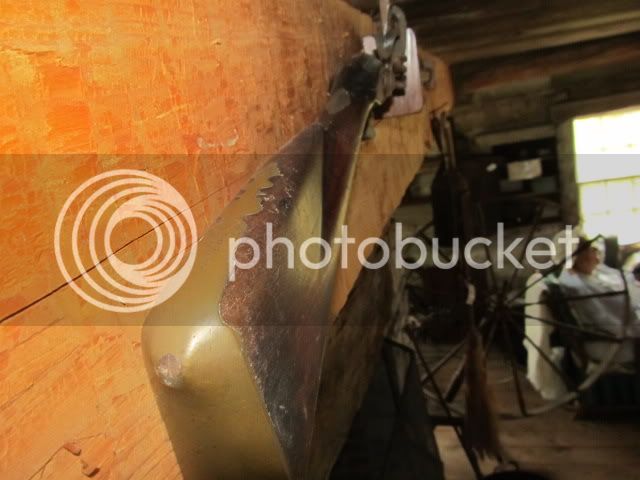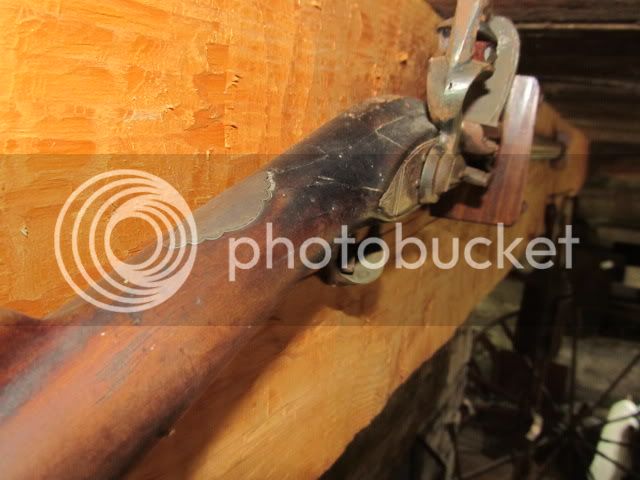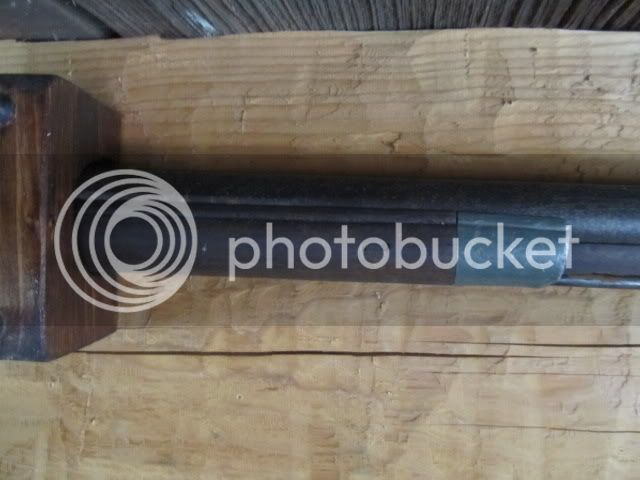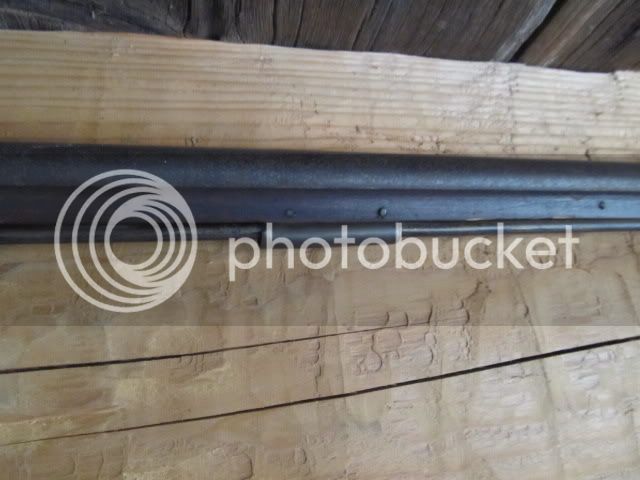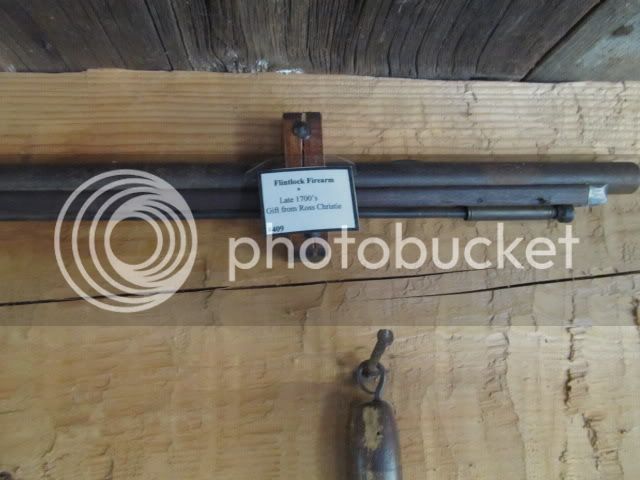I don't know if anyone has posted this one in the past...if so...maybe there are some who still haven't seen it. It is at a small museum in Grand Isle, Vermont (the Hyde log cabin). I tried to take the best pics that I could...but it was a little challenging. Any ideas as to the name on the lock...maker...anything else...etc? It is identified in the museum as "a late 1700's flintlock".
